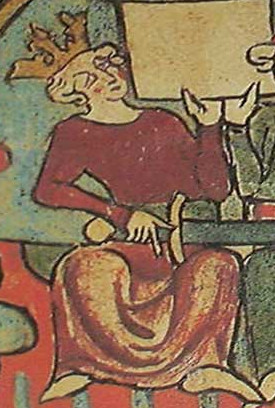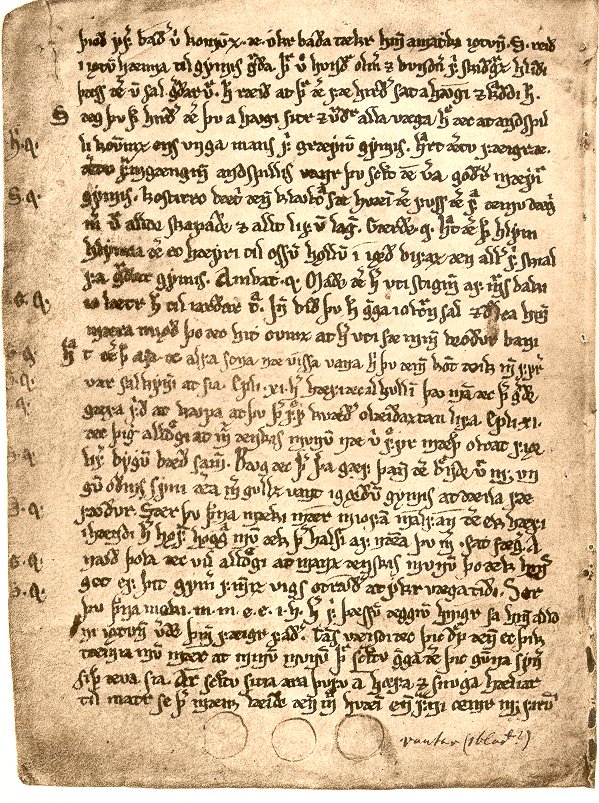|
Flóres Saga Ok Blankiflúr
''Flóres saga ok Blankiflúr'' is a medieval Icelandic romance saga. Characteristics The saga is a prose translation of the medieval French romance '' Floire et Blancheflor'' produced in Norway in the thirteenth century. In 1312 it became the basis of one of the Swedish verse romances known after their patron as the ''Eufemiavisorna The ''Eufemiavisorna'' are a group of three medieval romances translated into medieval Swedish: '' Herr Ivan lejonriddaren'' (1303), '' Hertig Fredrik av Normandie'' (1301 or 1308), and '' Flores och Blanzeflor'' (probably 1312). They are known in ...'': ''Flores och Blanzeflor''.Marianne E. Kalinke and P. M. Mitchell, ''Bibliography of Old Norse–Icelandic Romances'', Islandica, 44 (Ithaca: Cornell University Press, 1985). Manuscripts Kalinke and Mitchell identified the following manuscripts of the saga: * AM 489, 4° (ca. 1450), vellum * AM 575a, 4° (15th c.), vellum * AM 930, 4° (ca. 1800) * AM 948d, 4° (19th c.) * IB 185, 8° (ca. 1770 ... [...More Info...] [...Related Items...] OR: [Wikipedia] [Google] [Baidu] |
Romance Saga
The ''riddarasögur'' (literally 'sagas of knights', also known in English as 'chivalric sagas', 'romance-sagas', 'knights' sagas', 'sagas of chivalry') are Norse prose sagas of the romance genre. Starting in the thirteenth century with Norse translations of French '' chansons de geste'' and Latin romances and histories, the genre expanded in Iceland to indigenous creations in a similar style. While the ''riddarasögur'' were widely read in Iceland for many centuries they have traditionally been regarded as popular literature inferior in artistic quality to the Icelanders' sagas and other indigenous genres. Receiving little attention from scholars of Old Norse literature, many remain untranslated. The production of chivalric sagas in Scandinavia was focused on Norway in the thirteenth century and then Iceland in the fourteenth. Vernacular Danish and Swedish romances came to prominence rather later and were generally in verse; the most famous of these are the Eufemiavisorna, the ... [...More Info...] [...Related Items...] OR: [Wikipedia] [Google] [Baidu] |
Floire Et Blancheflor
''Floris and Blancheflour'' is the name of a popular romantic story that was told in the Middle Ages in many different vernacular languages and versions. It first appears in Europe around 1160 in "aristocratic" French. Roughly between the period 1200 and 1350 it was one of the most popular of all the romantic plots. The story of ''Floris and Blancheflour'' The following synopsis is from the original Old French "aristocratic" version (''Floire et Blancheflor'') of the late 12th century. The Middle English version of the poem derives from an Old French "aristocratic" version but differs somewhat in details. The opening section concerning how the two are born is missing from the English versions. Originally it dates to around 1250 and was called ''Floris and Blanchefleur''. Old French version Felix, King of Al-Andalus (Muslim Spain), on one of his ventures into Galicia in northwestern Spain attacks a band of Christian pilgrims en route on the Way of St James to the famous medieval ... [...More Info...] [...Related Items...] OR: [Wikipedia] [Google] [Baidu] |
Eufemiavisorna
The ''Eufemiavisorna'' are a group of three medieval romances translated into medieval Swedish: '' Herr Ivan lejonriddaren'' (1303), '' Hertig Fredrik av Normandie'' (1301 or 1308), and '' Flores och Blanzeflor'' (probably 1312). They are known in Swedish (and generally in English) as the ''Eufemiavisorna'', 'the Euphemia poems' (or, without the definite article, the ''Eufemiavisor'') or, less commonly, ''Eufemiaromanerna'', 'the Euphemia romances'; they are known in Norwegian (bokmål) as the ''Eufemiavisene'' and in Danish as ''Eufemiaviserne''. The romances are an early example of the poetic form known as Knittelvers; are the first known Scandinavian renderings of Continental European chivalric romance in verse; and are among the first major works of literature in Swedish. Origins and content Scandinavian translations of Continental European romance began with prose translations in the Norwegian court. The ''Eufemiavisorna'' represent a further stage of adaptation of Romance, ... [...More Info...] [...Related Items...] OR: [Wikipedia] [Google] [Baidu] |
Chivalric Sagas
The ''riddarasögur'' (literally 'sagas of knights', also known in English as 'chivalric sagas', 'romance-sagas', 'knights' sagas', 'sagas of chivalry') are Norse prose sagas of the romance genre. Starting in the thirteenth century with Norse translations of French '' chansons de geste'' and Latin romances and histories, the genre expanded in Iceland to indigenous creations in a similar style. While the ''riddarasögur'' were widely read in Iceland for many centuries they have traditionally been regarded as popular literature inferior in artistic quality to the Icelanders' sagas and other indigenous genres. Receiving little attention from scholars of Old Norse literature, many remain untranslated. The production of chivalric sagas in Scandinavia was focused on Norway in the thirteenth century and then Iceland in the fourteenth. Vernacular Danish and Swedish romances came to prominence rather later and were generally in verse; the most famous of these are the Eufemiavisorna, them ... [...More Info...] [...Related Items...] OR: [Wikipedia] [Google] [Baidu] |
Icelandic Literature
Icelandic literature refers to literature written in Iceland or by Icelandic people. It is best known for the sagas written in medieval times, starting in the 13th century. As Icelandic and Old Norse are almost the same, and because Icelandic works constitute most of Old Norse literature, Old Norse literature is often wrongly considered a subset of Icelandic literature. However, works by Norwegians are present in the standard reader ''Sýnisbók íslenzkra bókmennta til miðrar átjándu aldar'', compiled by Sigurður Nordal on the grounds that the language was the same. Early Icelandic literature The medieval Icelandic literature is usually divided into three parts: *Eddic poetry *Sagas *Skaldic poetry The ''Eddas'' There has been some discussion on the probable etymology of the term "Edda". Most say it stems from the Old Norse term ''edda'', which means great-grandmother, but some see a reference to Oddi, a place where Snorri Sturluson Snorri Sturluson ( ; ; 1179 – 22 S ... [...More Info...] [...Related Items...] OR: [Wikipedia] [Google] [Baidu] |

